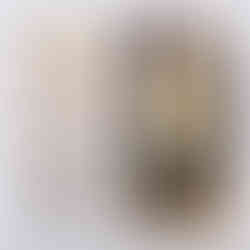
The main characteristic of experimental films is working with concepts that are not only abstract and non-tangible, but there is no clear agreement as what their ultimate meanings are. These mental concepts can be considered as the foundation of every experimental work, as without these concepts, the existence of that work will be questioned. Unlike usual narrative films which have defined rules, experimental cinema is always a place of trial & error, debate, and discussion. We should not worry about these differences of opinion because over time, this type of filmmaking, which is very unconventional and may not have a precise definition, proves itself. Experimental cinema sometimes blends and uses other arts such as painting and literature in the most creative ways. In commercial cinema, human relationships are the focus, but in experimental cinema, the experiences of the filmmaker/author are more important. Although we have high-budget films in this genre as well, most experimental films are low-cost, single-person or limited group productions. Experimental filmmakers nowadays are focusing on recording technology. For example, to capture electricity, technical work must be done in the laboratory on the footage.
From this perspective, experimental films can be both scientifically and artistically appealing and exciting for audiences. "LIFE ON MARS | Are We for Real?" is a work that has all the necessary characteristics of a brilliant experimental film. Although it is made in the form of a music video and like all music videos, is based on a piece of music accompanied by a singer who sings it, it is made so artistically that it can be watched as an excellent experimental film. Its creator, AIDAN AMORE, manages to create a space that makes fluidity and non-static nature as its main identity. As a result, it not only becomes different from all conventional works in this field but can also develop its new identity into one of those abstract concepts mentioned at the beginning of this article. Here, we are faced with a type of movement that becomes more complex; whether in terms of moving between real images and animated-like ones or in an effort to break out of the conventional framework of character introduction. The protagonist, the singer of the song, is not introduced here as a singer but seems to be part of the unique world of the film. From among the images displayed (which are experienced in various colors), and with the help of brilliant editing, we get familiar with the main character. The real world collides with the imaginary world of the film and shows us simultaneously that while we are watching the video, the video is being edited with software.

Experimental cinema cannot be clearly defined and put in a pattern, so there are different definitions of it. For this very reason, if we cannot define an experimental film, we can at least say what it is not. When we use any element in cinema to convey our story directly, we have approached a narrative form, and the work eventually finds a structural narrative. However, the important point is that experimental cinema does not fit into this space at all, and its job is to break the rules, the first step of which is not going towards creating a three-act story, an Aristotelian structure. Because the experimental filmmaker has a concept in mind that he or she wants to create a language for. Generally, the goal of experimental cinema from the beginning is to expand the language of cinema; creating a new and novel cinematic image/expression in a way that the audience has not seen anything like it before. One thing to note is that experimental cinema is not created as a genre which has its own defined sub-genres: this type of cinema is completely separate from the mainstream, in which we should see what we can do in the grammar of the image. For example, a filmmaker using red or blue in his film does something amazing in creating a unique atmosphere for a horror film. As we see in "LIFE ON MARS | Are We for Real?", various elements of narrative cinema are constantly used but in a way that is not common in conventional narratives. As we mentioned, even though "LIFE ON MARS | Are We for Real?" is a music video, but because of these artistic aspects, it goes beyond and becomes a cinematic, experimental work. In this work, the use of color and showing the process of editing the music video throw us out of the world of the work and at the same time pull us inside. With this method, the process of familiarization with the music video actually takes place. In normal circumstances, when everything is arranged so that we believe we are watching a conventional music video, we generally do not think about what the images we see can mean anything else because everything is in the service of the musical work in a conventional and defined way. But when elements are inconsistent with the conventional world of music videos and creators deliberately try to break away from the ordinary and conventional world of their co-genre works, we pay more attention to the concepts displayed and mentioned because we understand that the goal was not just to create a simple music video. In "LIFE ON MARS | Are We for Real?" we are faced with a progressive and ambitious work that, although it is clear that it is not high-budget, with a large production, it tries to build its world step by step using cinematic elements. The art of the creator has been to share their intended concepts with us through visual language alongside the concepts and world of music used in the video. "LIFE ON MARS | Are We for Real?" can be watched multiple times and enjoyed for its superb understanding of rhythm, editing, and artistic composition of images that together create a cohesive and enjoyable whole.















